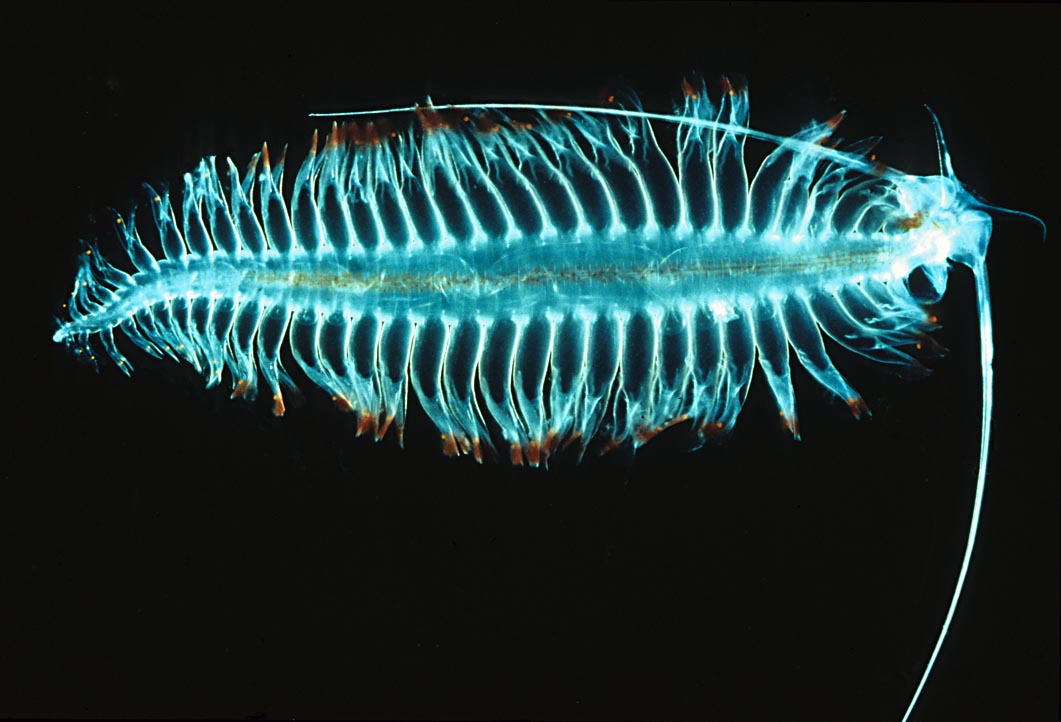Holoplankton on:
[Wikipedia]
[Google]
[Amazon]
 Holoplankton are organisms that are
Holoplankton are organisms that are
 Holoplankton are organisms that are
Holoplankton are organisms that are planktic
Plankton are the diverse collection of organisms found in water (or air) that are unable to propel themselves against a current (or wind). The individual organisms constituting plankton are called plankters. In the ocean, they provide a cruc ...
(they live in the water column and cannot swim against a current) for their entire life cycle. Holoplankton can be contrasted with meroplankton
Meroplankton are a wide variety of aquatic organisms which have both planktonic and benthic stages in their life cycles. Much of the meroplankton consists of larval stages of larger organism. Meroplankton can be contrasted with holoplankton, whi ...
, which are planktic organisms that spend part of their life cycle in the benthic zone. Examples of holoplankton include some diatoms, radiolarian
The Radiolaria, also called Radiozoa, are protozoa of diameter 0.1–0.2 mm that produce intricate mineral skeletons, typically with a central capsule dividing the cell into the inner and outer portions of endoplasm and ectoplasm. The elab ...
s, some dinoflagellates, foraminifera
Foraminifera (; Latin for "hole bearers"; informally called "forams") are single-celled organisms, members of a phylum or class of amoeboid protists characterized by streaming granular ectoplasm for catching food and other uses; and commonly ...
, amphipods, krill
Krill are small crustaceans of the order Euphausiacea, and are found in all the world's oceans. The name "krill" comes from the Norwegian word ', meaning "small fry of fish", which is also often attributed to species of fish.
Krill are consi ...
, copepods, and salp
A salp (plural salps, also known colloquially as “sea grape”) or salpa (plural salpae or salpas) is a barrel-shaped, planktic tunicate. It moves by contracting, thereby pumping water through its gelatinous body, one of the most efficient ...
s, as well as some gastropod mollusk species. Holoplankton dwell in the pelagic zone as opposed to the benthic zone. Holoplankton include both phytoplankton and zooplankton
Zooplankton are the animal component of the planktonic community ("zoo" comes from the Greek word for ''animal''). Plankton are aquatic organisms that are unable to swim effectively against currents, and consequently drift or are carried along by ...
and vary in size. The most common plankton are protist
A protist () is any eukaryotic organism (that is, an organism whose cells contain a cell nucleus) that is not an animal, plant, or fungus. While it is likely that protists share a common ancestor (the last eukaryotic common ancestor), the exc ...
s.
Reproduction
Holoplankton have unique traits that make reproduction in the water column possible. Bothsexual
Sex is the biological distinction of an organism between male and female.
Sex or SEX may also refer to:
Biology and behaviour
*Animal sexual behaviour
**Copulation (zoology)
**Human sexual activity
**Non-penetrative sex, or sexual outercourse
** ...
and asexual reproduction are used depending on the type of plankton. Some invertebrate holoplankton release sperm into the water column which are then taken up by the females for fertilization. Other species release both sperm and egg to increase the likelihood of fertilization. Environmental, mechanical, or chemical cues can all trigger this release.
Diatoms are single celled phytoplankton that can occur as individuals or as long chains. They can reproduce sexually and asexually.
Diatoms are important oxygen producers and are usually the first step in the food chain.
Copepods are small holoplanktonic crustaceans that swim using their hind legs and antennae.
Defenses
Because of their small size and sluggish swimming abilities, holoplanktonic species have made certain specialized adaptations and in some cases are equipped with special defenses. Adaptations include flat bodies, lateral spines, oil droplets, floats filled with gases, sheaths made of gel-like substances, and ion replacement. Zooplankton have adapted by developing transparent bodies, bright colors, bad tastes and cyclomorphosis (seasonal changes in body shape). When predators release a chemical in the water to signal zooplankton; cyclomorphosis allows holoplankton to increase their spines and protective shields. Studies have shown that although small in size certain gelatinous zooplankton are rich in protein and lipid. "Many holoplankton seem to have very little visible defense mechanisms; therefore, it is hypothesized that a chemical defense may be possible. Pelagiccnidaria
Cnidaria () is a phylum under kingdom Animalia containing over 11,000 species of aquatic animals found both in freshwater and marine environments, predominantly the latter.
Their distinguishing feature is cnidocytes, specialized cells that ...
ns (jellyfish and related species) have nematocysts on their tentacles that eject a coiled microscopic thread very rapidly. These threads penetrate the surface of their target and release a series of complicated, biologically advanced venoms. Their stings can be very dangerous, due in part to the number of vital systems affected.
Sexual holoplankton
* CopepodSee also
*Plankton
Plankton are the diverse collection of organisms found in water (or air) that are unable to propel themselves against a current (or wind). The individual organisms constituting plankton are called plankters. In the ocean, they provide a crucia ...
*Meroplankton
Meroplankton are a wide variety of aquatic organisms which have both planktonic and benthic stages in their life cycles. Much of the meroplankton consists of larval stages of larger organism. Meroplankton can be contrasted with holoplankton, whi ...
SourcesAustralian Museum Online
References
{{plankton Aquatic ecology Planktology